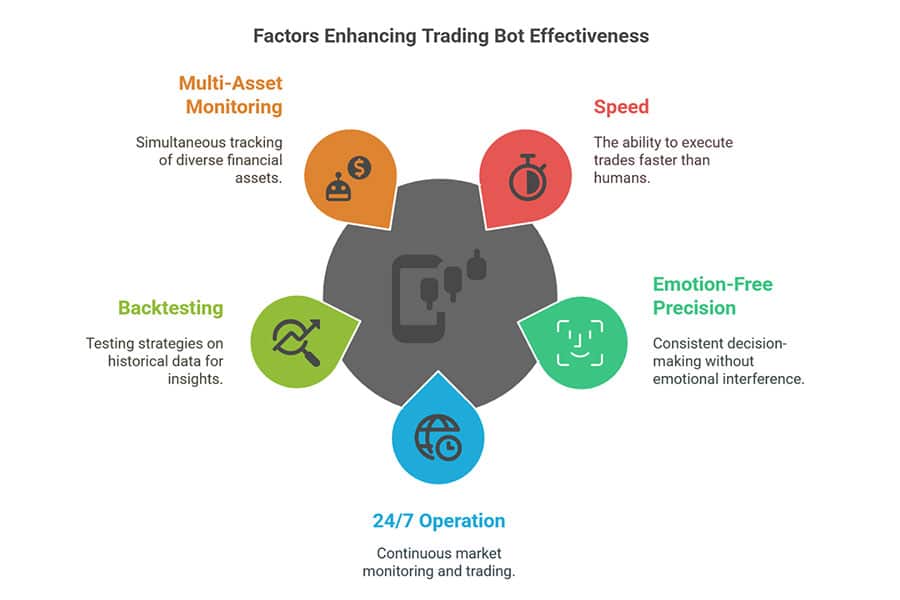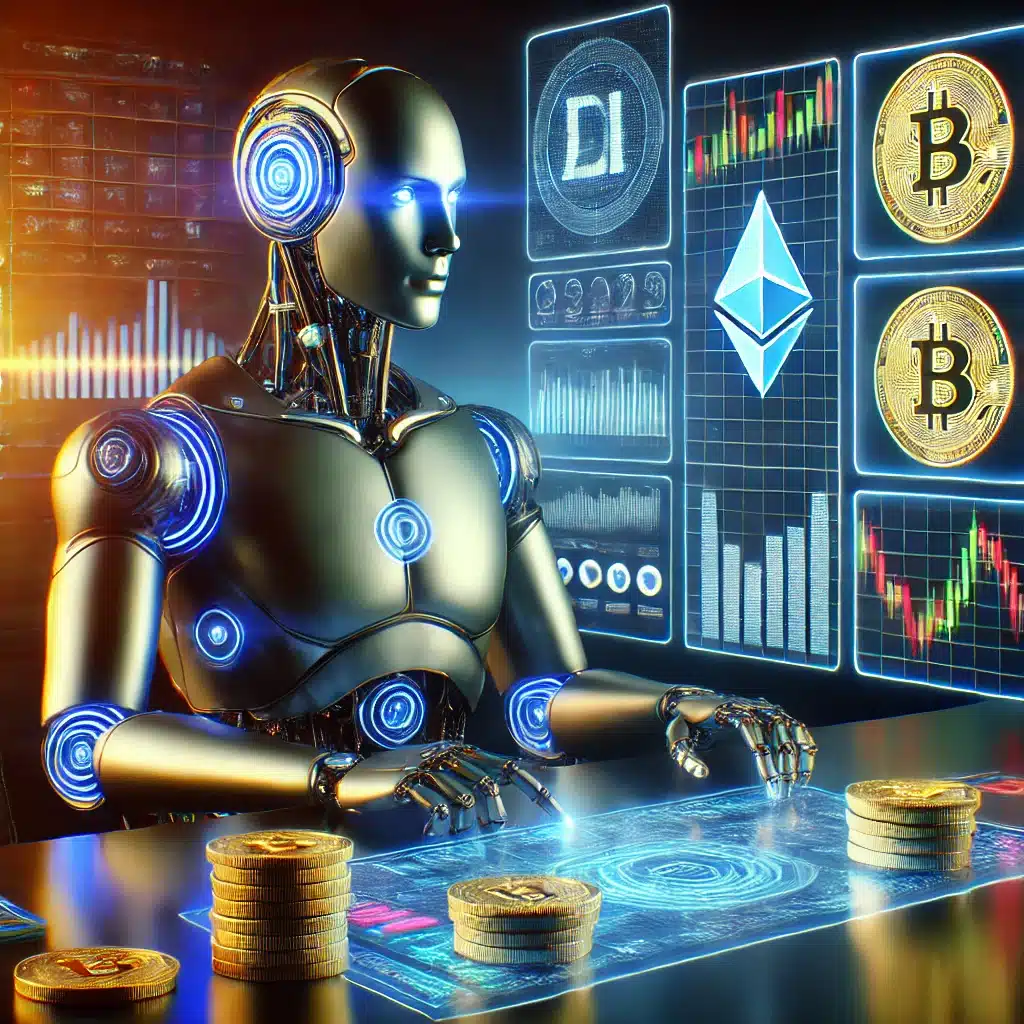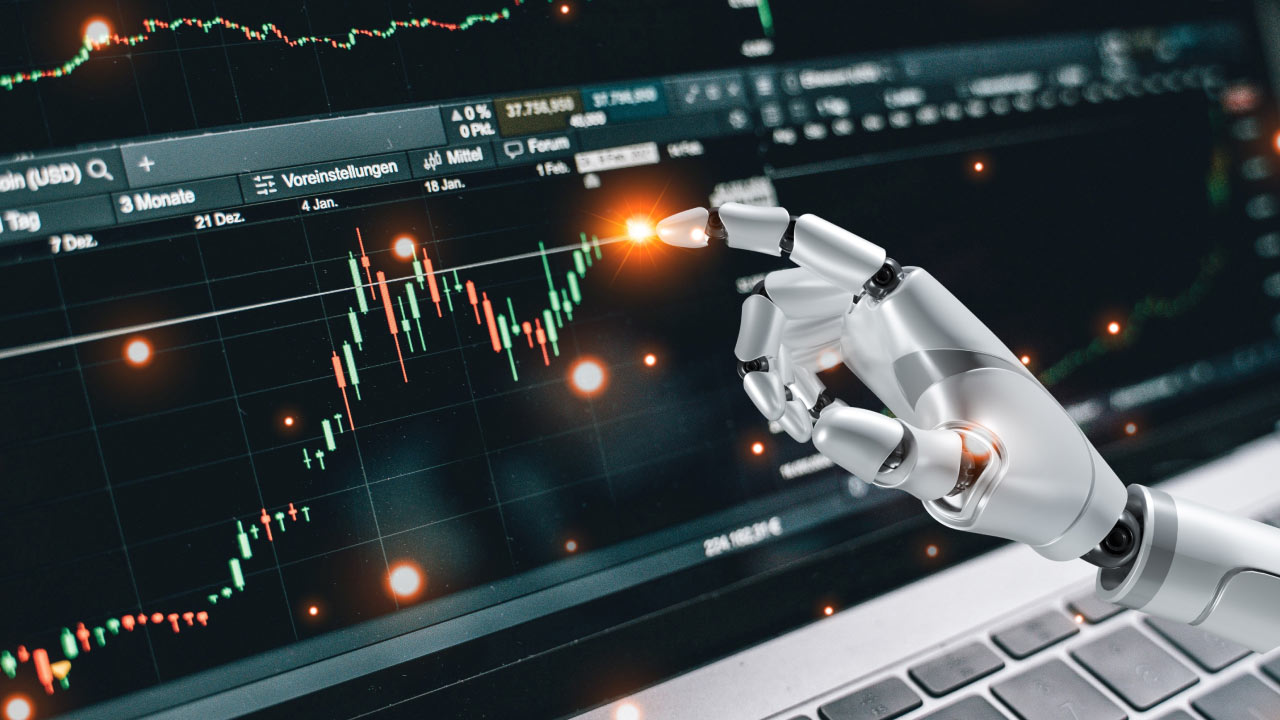The rise of AI-powered crypto trading robots has sparked intense debate in the cryptocurrency community, with some touting them as a game-changer for traders, while others dismiss them as a marketing gimmick. These automated systems claim to utilize artificial intelligence and machine learning algorithms to analyze market trends and make profitable trades.
But do they really work as advertised? This article delves into the pros, cons, and risks associated with AI-powered crypto trading robots, examining their potential benefits and pitfalls to help traders make informed decisions. A critical evaluation is necessary.
Evaluating the Effectiveness of AI-Powered Crypto Trading Robots
The rise of AI-powered crypto trading robots has sparked intense debate within the cryptocurrency community. These sophisticated systems utilize complex algorithms to analyze market trends, predict price movements, and execute trades automatically.
But do they really work? To answer this, it’s essential to weigh the pros, cons, and risks associated with these robots.
Advantages of AI-Powered Crypto Trading Robots
AI-powered crypto trading robots offer several benefits, including the ability to analyze vast amounts of market data quickly and accurately, identify profitable trading opportunities, and execute trades at optimal times. This can lead to increased trading efficiency and potentially higher returns on investment. Additionally, these robots can operate around the clock, allowing traders to capitalize on market fluctuations even when they’re not actively monitoring the market.
Potential Drawbacks and Risks
Despite their advantages, AI-powered crypto trading robots also come with significant risks. One major concern is the potential for algorithmic bias, which can result in poor trading decisions if the underlying algorithms are flawed or based on incomplete data. Furthermore, these robots can be vulnerable to market volatility and unexpected events, which can lead to significant losses if not properly managed. It’s also worth noting that the use of AI-powered trading robots can lead to over-reliance on technology, causing traders to neglect their own market analysis and decision-making.
Key Considerations for Traders
Traders considering the use of AI-powered crypto trading robots should carefully evaluate several key factors, including the robot’s underlying algorithms, historical performance, and risk management features. It’s also essential to understand the fees associated with using these robots, as well as any potential security risks. By carefully weighing these factors, traders can make informed decisions about whether AI-powered crypto trading robots are right for them.
| Feature | Description | Importance Level |
|---|---|---|
| Algorithmic Transparency | The ability to understand the underlying algorithms used by the robot | High |
| Historical Performance | The robot’s track record of success in various market conditions | High |
| Risk Management Features | The presence of features such as stop-loss orders and position sizing | Medium |
| Fees and Charges | The costs associated with using the robot, including subscription fees and trading commissions | Medium |
| Security Measures | The presence of robust security measures to protect user funds and data | High |
What are the disadvantages of AI trading bots?

The disadvantages of AI trading bots are numerous and can have significant impacts on traders and the financial markets. One of the primary concerns is that these bots can be prone to errors, which can lead to substantial financial losses if not properly monitored and corrected.
Lack of Human Judgment and Oversight
AI trading bots lack the nuance and judgment that a human trader would bring to the table. They operate based on predefined rules and algorithms, which can sometimes fail to account for unexpected market movements or events. This can lead to the bot making trades that are not in the best interest of the trader.
- They may not be able to adjust to sudden changes in market conditions.
- They can be overly reliant on historical data, which may not be indicative of future performance.
- They lack the ability to interpret complex or nuanced market signals.
Technical Issues and Dependence on Technology
AI trading bots are dependent on complex technology, which can sometimes fail or malfunction. This can result in missed trading opportunities or incorrect trades being executed. Furthermore, the reliance on technology can also lead to issues such as connectivity problems or data feed errors.
- Technical glitches can cause the bot to execute trades incorrectly or miss trading opportunities.
- The bot’s performance is only as good as the data it is trained on.
- Connectivity issues can prevent the bot from functioning properly.
Security Risks and Lack of Transparency
AI trading bots can also pose security risks, particularly if they are not properly secured. Additionally, the use of AI trading bots can lack transparency, making it difficult for traders to understand why certain trades are being made.
- The use of AI trading bots can increase the risk of cyber attacks.
- The complexity of the algorithms used can make it difficult to understand the bot’s decision-making process.
- The lack of transparency can make it challenging to identify potential issues or biases in the bot’s trading decisions.
Can you make money with a crypto trading bot?

The possibility of making money with a crypto trading bot is a topic of great interest among cryptocurrency traders and investors. A crypto trading bot is a software program that uses pre-programmed rules to automatically execute trades on a cryptocurrency exchange. These rules can be based on technical indicators, market trends, and other factors.
How Crypto Trading Bots Work
Crypto trading bots work by analyzing market data and making trades based on predefined rules. They can operate 24/7, allowing for continuous monitoring of the market and rapid execution of trades. The key to a successful trading bot is the quality of its programming and the effectiveness of its trading strategy. Here are some key aspects of how crypto trading bots work:
- They analyze market data, such as price charts and trading volumes, to identify trends and patterns.
- They use technical indicators, such as moving averages and relative strength index, to generate buy and sell signals.
- They can be programmed to execute trades automatically based on these signals.
Benefits of Using a Crypto Trading Bot
Using a crypto trading bot can have several benefits, including increased efficiency and reduced emotional bias. By automating the trading process, a bot can help traders avoid making impulsive decisions based on emotions. Here are some benefits of using a crypto trading bot:
- They can operate around the clock, allowing for continuous monitoring of the market.
- They can help traders avoid emotional decision-making by sticking to a predefined strategy.
- They can execute trades rapidly, taking advantage of market opportunities as they arise.
Challenges and Risks of Crypto Trading Bots
While crypto trading bots can be a useful tool for traders, they also come with challenges and risks. One of the main risks is that a bot’s performance is only as good as its programming and the quality of its trading strategy. Here are some challenges and risks associated with crypto trading bots:
- They require ongoing maintenance and updates to ensure they remain effective.
- They can be vulnerable to market volatility and unexpected events.
- They may not be able to adapt to changing market conditions as effectively as a human trader.
What is the best AI to use for crypto trading?

The best AI to use for crypto trading is a matter of ongoing debate among traders and experts. Some popular options include machine learning algorithms, deep learning models, and natural language processing techniques. These AI systems can analyze vast amounts of market data, identify patterns, and make predictions about future price movements.
Key Considerations for Choosing an AI for Crypto Trading
When selecting an AI for crypto trading, there are several key considerations to keep in mind. The AI should be able to process large amounts of data quickly and accurately, and provide reliable predictions about market trends. Some important factors to consider include the AI’s ability to handle complex data sets, its level of transparency, and its ability to adapt to changing market conditions.
- The AI’s data processing capabilities and speed
- The level of transparency and explainability provided by the AI
- The AI’s ability to adapt to changing market conditions and learn from new data
Popular AI Techniques Used in Crypto Trading
Several AI techniques are commonly used in crypto trading, including machine learning, deep learning, and natural language processing. Machine learning algorithms can be used to identify patterns in market data and make predictions about future price movements. Deep learning models can be used to analyze complex data sets and identify subtle patterns that may not be visible to human analysts. Natural language processing techniques can be used to analyze news and social media sentiment to gauge market sentiment.
- Machine learning algorithms for pattern recognition and prediction
- Deep learning models for complex data analysis and pattern identification
- Natural language processing techniques for sentiment analysis and market monitoring
Evaluating the Performance of AI in Crypto Trading
Evaluating the performance of an AI in crypto trading can be challenging, as it depends on a variety of factors including the quality of the data used to train the AI, the AI’s algorithmic complexity, and the level of market volatility. To evaluate the performance of an AI, traders can use metrics such as return on investment, Sharpe ratio, and drawdown. It’s also important to consider the AI’s ability to adapt to changing market conditions and its level of transparency and explainability.
- Return on investment (ROI) as a measure of the AI’s profitability
- Sharpe ratio as a measure of the AI’s risk-adjusted returns
- Drawdown as a measure of the AI’s potential losses and risk exposure
What are the risks of using AI in trading?

The use of Artificial Intelligence (AI) in trading has gained significant attention in recent years due to its potential to analyze vast amounts of data, identify patterns, and make predictions. However, there are several risks associated with using AI in trading that need to be considered.
Data Quality Issues
The performance of AI models in trading is heavily dependent on the quality of the data used to train them. If the data is inaccurate, incomplete, or biased, the AI model’s predictions and decisions may be flawed.
- Inaccurate or incomplete data can lead to incorrect predictions and trading decisions.
- Biased data can result in AI models that are not effective in diverse market conditions.
- Data quality issues can be exacerbated by the complexity of the data used in trading, such as high-frequency data.
Model Risk and Overfitting
AI models used in trading can be prone to model risk and overfitting, which can result in poor performance in live trading. Model risk refers to the risk that the AI model is not accurately representing the underlying relationships in the data, while overfitting occurs when the model is too closely fit to the training data and fails to generalize to new data.
- Overfitting can result in AI models that perform well on historical data but poorly on new data.
- Model risk can be mitigated through techniques such as cross-validation and walk-forward optimization.
- Regular model monitoring and updating are necessary to minimize model risk.
Operational and Regulatory Risks
The use of AI in trading also raises operational and regulatory risks that need to be considered. Operational risks include the potential for errors or failures in the AI system, while regulatory risks include the need to comply with relevant laws and regulations.
- Operational risks can be mitigated through robust testing and validation of AI systems.
- Regulatory risks can be managed through compliance with relevant laws and regulations, such as those related to risk management and disclosure.
- Ongoing monitoring and review of AI systems are necessary to ensure compliance with regulatory requirements.
Frequently Asked Questions
What are AI-powered crypto trading robots?
AI-powered crypto trading robots are automated systems that use artificial intelligence and machine learning algorithms to analyze market data and make trades on behalf of users. These robots can process vast amounts of data, identify patterns, and execute trades at speeds that humans cannot match, potentially leading to more profitable trades.
Do AI-powered crypto trading robots really work?
The effectiveness of AI-powered crypto trading robots varies depending on the algorithm used, market conditions, and the quality of the data they are trained on. While some robots have been successful in generating profits, others have failed, and their performance can be inconsistent. It’s essential to research and test a robot before using it with real funds.
What are the pros of using AI-powered crypto trading robots?
The pros of using AI-powered crypto trading robots include their ability to operate 24/7, execute trades at high speeds, and analyze large datasets. They can also help reduce emotional bias in trading decisions and potentially lead to more consistent results. Additionally, some robots offer backtesting capabilities, allowing users to evaluate their performance before using them.
What are the risks associated with AI-powered crypto trading robots?
The risks associated with AI-powered crypto trading robots include the potential for significant financial losses if the robot makes incorrect trades or if the market moves unexpectedly. Additionally, some robots may be scams or have hidden fees, and users may be required to grant access to their exchange accounts, potentially compromising their security. It’s crucial to carefully evaluate a robot before using it.

